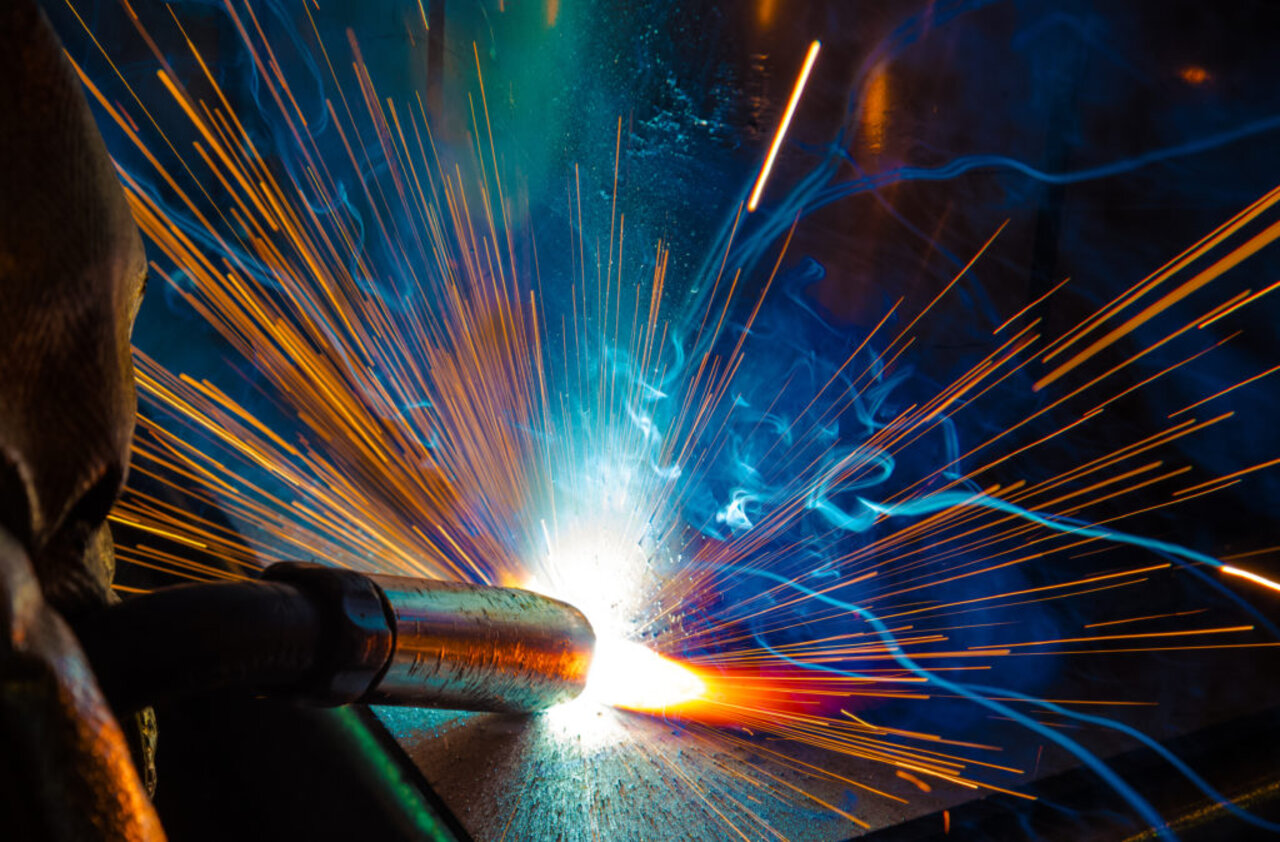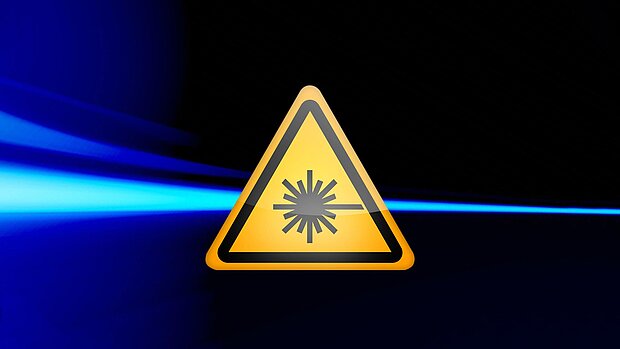Laser Welding Safety Concerns
Laser safety is about the safe design,
Laser safety is about the safe design, use and implementation of lasers to minimise the risk of laser accidents, especially eye injuries. Even relatively small amounts of laser light can lead to permanent eye damage.
Moderate and high-power lasers are potentially hazardous as they can burn the retina of the eye and sometimes the skin or start a fire.
To control the risk of injury, various specifications are used to define ‘classes’ of laser depending on their power and wavelength. Regulations also prescribe required laser safety measures such as labelling lasers with specific warnings and wearing laser safety glasses or goggles when operating lasers.
- Eye : Acute exposure of the eye to lasers of certain wavelengths and power can cause corneal or retinal burns (or both). Chronic exposure to excessive levels may cause corneal or lenticular opacities (cataracts) or retinal injury.
- Skin : Acute exposure to high levels of optical radiation may cause skin burns; while cancer may occur for ultraviolet wavelengths (290-320 nm).
- Chemical : Some lasers require hazardous or toxic substances to operate (i.e., chemical dye, Excimer lasers).
- Electrical : Most lasers utilize high voltages that can be lethal.
- Fire : The solvents used in dye lasers are flammable. High voltage pulse or flash lamps may cause ignition. Flammable materials may be ignited by direct beams or specular reflections from high power continuous wave (CW) infrared lasers.
MOBILE LASER WELDER USED WITHOUT ENCLOSURE
High-power Laser Used without Enclosures
It is possible to use industrial lasers without enclosures!
However, in order to make them safe to use, personal protective equipment must be used (laser safety glasses) and access to the surrounding area needs to be controlled by interlocks or other means.
Special signage is required and other procedures must be implemented to enforce the laser-controlled area.

Class 3B and Class 4 Laser Operation Requirements
This webpage is intended to provide general design and engineering guidance for the development and installation of safety controls in laboratories, workshops, factories,... containing Class 3b and class 4 laser systems. The responsible Principal Laser Users for each Class 3b and class 4 system should incorporate as many of these design features as appropriate/applicable into their laboratories, workshops, factories.. or work with the Laser Safety Manager to achieve the same level of protection with alternate control measures.
Users of our Lasermach PhotonWeld Welding Machines are required to plan, in advance, control measures appropriate to the classes of the lasers and laser systems they install. Where practicable, the measures for Class 4 lasers, which our Photonweld Series belongs, should include the following:
- appointment of a Designed Laser Safety Officer;
- the drawing up of specific internal safety codes of practice for each specific piece of laser equipment;
- designation of a Laser Controlled Area;
- incorporation of an Engineering Controls Scheme;
- organisation of an Administrative and Procedural Control Structure;
- the provision of all necessary tools and suitable personal protective equipment;
- the posting of appropriate warning signs at all entrances to the Laser Controlled Area;
- the provision of training, education and medical surveillance
Not all the above control measures may be required but the Designated Laser Safety Officer should have unequivocal reasons to rule out any of them. Details of the
above control measures are given in IEC 60825-1 and ANSI Z136-1.
Specific Controls and actions to take for Class 4 Lasers
Class 4 lasers are required to have:
specific safety protocols including remote interlock
beam stop or attenuator
warning signs and labelling
elimination of specular reflections
use of eye protection where there is a potential eye hazard
use of protective clothing
requirement for medical examination immediately if there is a suspected injury
provision of appropriate training on safe use of equipment including maintenance
safe work procedures for control of hazards
Considerations for workshop and laboratory design for class 4 lasers include:
no windows
an area for storing protective eyewear
key locks to prevent unauthorised and unprotected personnel from entering
a non-defeatable door interlock
signs at entrance to lab/workshop
laser beam path must be enclosed
beams must be positively terminated
laser work area must be free of unnecessary specular surfaces
curtain materials must be fire resistant
a clearly visible power cut-off switch which kills power to the laser
a warning light must be located outside of the lab door to indicate when the laser if firing
other controls as necessary
Specialized Benefits and Requirements of Laser-Welding Rooms and Laser-Welding Enclosures
Safe and conducive modular laser-welding rooms require a few key factors that distinguish them from other structures and construction environments. This is due almost entirely to the high temperatures required for the welding process and the potential risks associated with them.
Full room laser enclosures create a complete laser-safe environment:
- Special glass windows rated to specific welding equipment.
- Specialized high-performance HVAC systems that can accommodate heat loads produced by laser welders.
- Specially designed entry doors with safety interlocks that work in conjunction with the laser welder to halt welding immediately upon opening.
- Safety alert warning lights visually warn room occupants and those in nearby proximity that the laser welder is in use.
- Light switches for the laser room are on the outside wall by the door, so control is reserved to entry and exit.
Laser enclosures are needed to house laser workstations, which serve as a protective barrier for personnel outside of the enclosures from the laser process. To meet requirements, options include:
- Walls made of fire retardant materials - Traditional vinyl gypsum modular wall panels can still be used.
- An open design that could utilize existing lighting and sprinkler systems - Traditional LED lights can still be used.
- Laser safety glass windows where required

Illuminated "Laser On" warning sign
Illuminated "Laser On" warning sign, posted at each entrance to the laser laboratory or workshop, that is activated automatically when the laser is emitting light. In case this is not possible, a manually controlled illumination “laser on” warning sign can be installed (operation needs to be detailed in the SOP). As a last resort option, static laminated warning signs can be posted in lieu of Laser on Light.

Laser-beam shutt-off switch
3 Laser-beam shutt-off switch that blocks the laser beam, activated:
- a. Manually as needed by laser operators
- b. If any emergency "Beam Off" button (item 6) is depressed
- c. Automatically upon electrical power failure, and
- d. Automatically upon opening any of the interlocks described in item 5.
In case of activation method b-d, the shutter should need to be manually reset before re-opening. In case the laser is equipped with an external interlock input to stop output, this interlock can be used in lieu of the shutter.

Interlock on Entry Door(s)
Interlock on Entry Door(s) wired to activate the shut-off described in item 4 (and requiring manual reset once activated) upon opening of the door into the laser use area; those doors without a curtained entryway enclosure (item 2) must be equipped with a non-defeatable interlock system, while doors protected by a curtained enclosure must have either a non-defeatable or a defeatable interlock system (i.e. bypass switch allows trained individuals to temporarily bypass the interlock when entering or exiting). Should an interlock system not be possible it can be replaced by procedural controls (this needs to be detailed in the SOP).

Emergency "Beam Off" buttons which activate the beam shut-off
Emergency "Beam Off" buttons which activate the beam shut-off described in item 4; one button located within curtained entryway area (item 2), another at an easily accessible point within the laboratory

Emergency "Power Off" button
Emergency "Power Off" button (for laboratories or workshops containing high voltage or high current devices) which cuts electrical service to high power equipment in case of electrical emergency; located at an easily accessible point within the laboratory or workshop

Curtained entryway enclosure
Curtained entryway enclosure [unless a non-defeatable (cannot be bypassed) interlock system tied to beam shutters as described below is installed] composed of fabric sufficiently fire-resistant to prevent combustion when hit by the enclosed laser beam, at the primary entrance to the laser lab; arranged such that, when closed, it fully
protects the doorway from stray beams that might otherwise be transmitted out the door.
Curtain specifications: The irradiance of the curtain should be below the damage threshold limit value for the barrier at the installation distance. In the absence of specification of the laser the best option is to install a curtain with high irradiance specifications.



